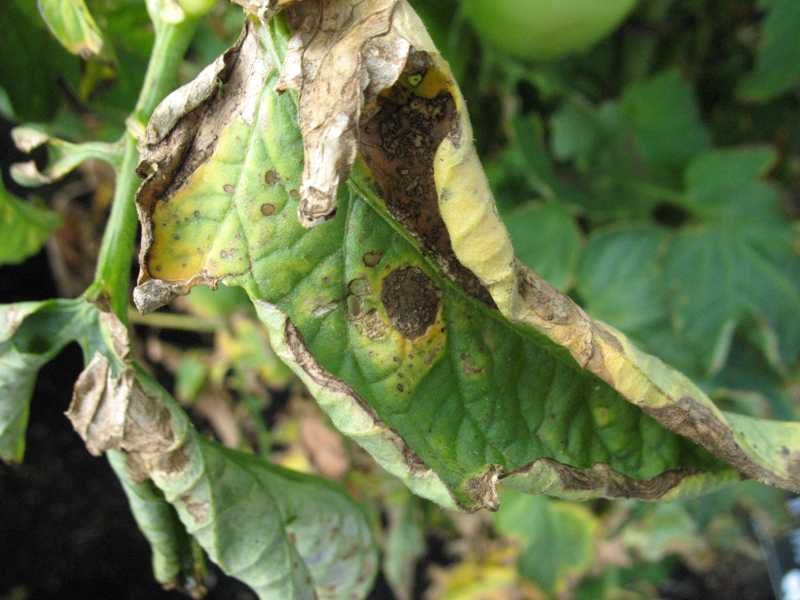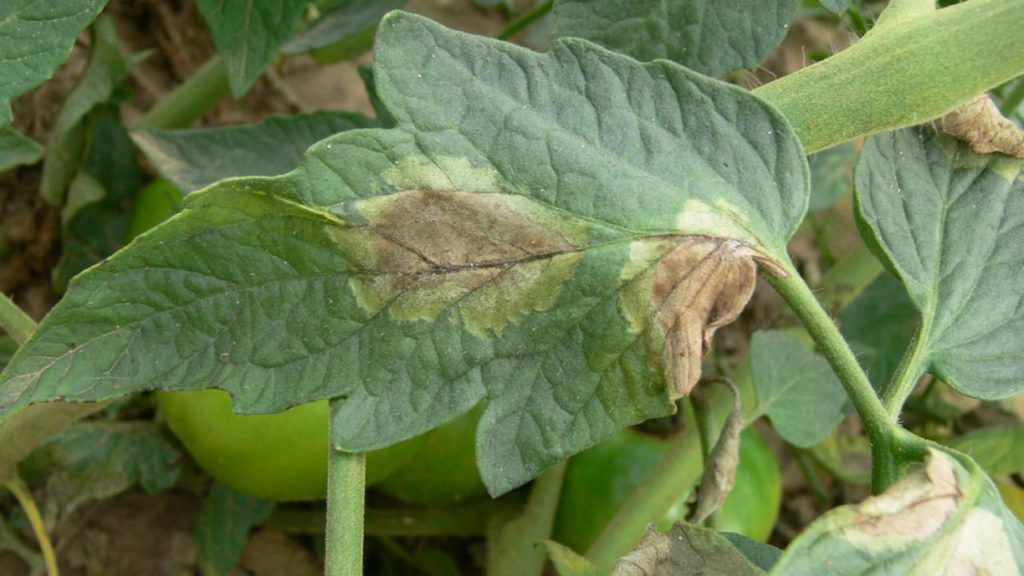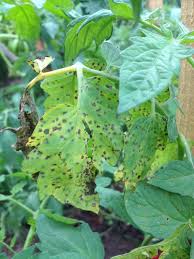We’re having a lot of trouble with diseases in tomatoes. Leaves turn brown from the bottom of the plant and move upward. Is it a blight or a wilt? We’ve moved the plants and rotated them to a new location in the garden but this hasn’t helped. So now we’re thinking about creating raised beds. Will that help if these are soil fungi?
These are soil-borne fungi. They infect plants through rain splash, starting with the lower leaves and working their way up the plant. Creating a raised bed might help as long as you’re using new soil. But it may not eliminate the problem forever. Pick off any infected leaves as soon as you notice them and dispose of them. Make sure that there’s good air circulation, avoid over-head watering, and mulch around the plant to reduce rain splash. Use an all purpose garden fungicide to protect the unaffected leaves on a weekly basis.
Early Blight: symptoms appear first on older, mature leaves near the base of the plant–one or two spots per leaf, spots ¼ to ½ inch in diameter; spots have tan centers with concentric rings and yellow halos around the edges, target-shape appearance with defined border; spots enlarge and coalesce. Large portion of leaf becomes a diffuse yellow and may drop. No mold appears. Disease spreads slowly.

Late Blight: water-soaked spots show first on lower leaves; spots start out pale green diffuse irregular spots on upper side of leaf, usually near the edges of tips of leaves; spots turn brown to purplish-black and velvety with pale green border on underside of leaf; spots appear on young leaves at the top of the plant; spots look water-soaked; no concentric rings or defined border around necrotic spots. In humid, wet conditions, a fuzzy ring of mold around spot appears on the undersides of leaves. Leaves shrivel, turn brown, and die. Disease spreads rapidly.

Leaf Spot: numerous brown spots appear on the leaves 1/16 to 1/4 inch in diameter; spots are circular with dark brown margins and tan to gray center–a black speck in the center; spots do not have a yellow halo. Disease spreads upwards from oldest to youngest. Leaves turn slightly yellow, then brown, then wither.

